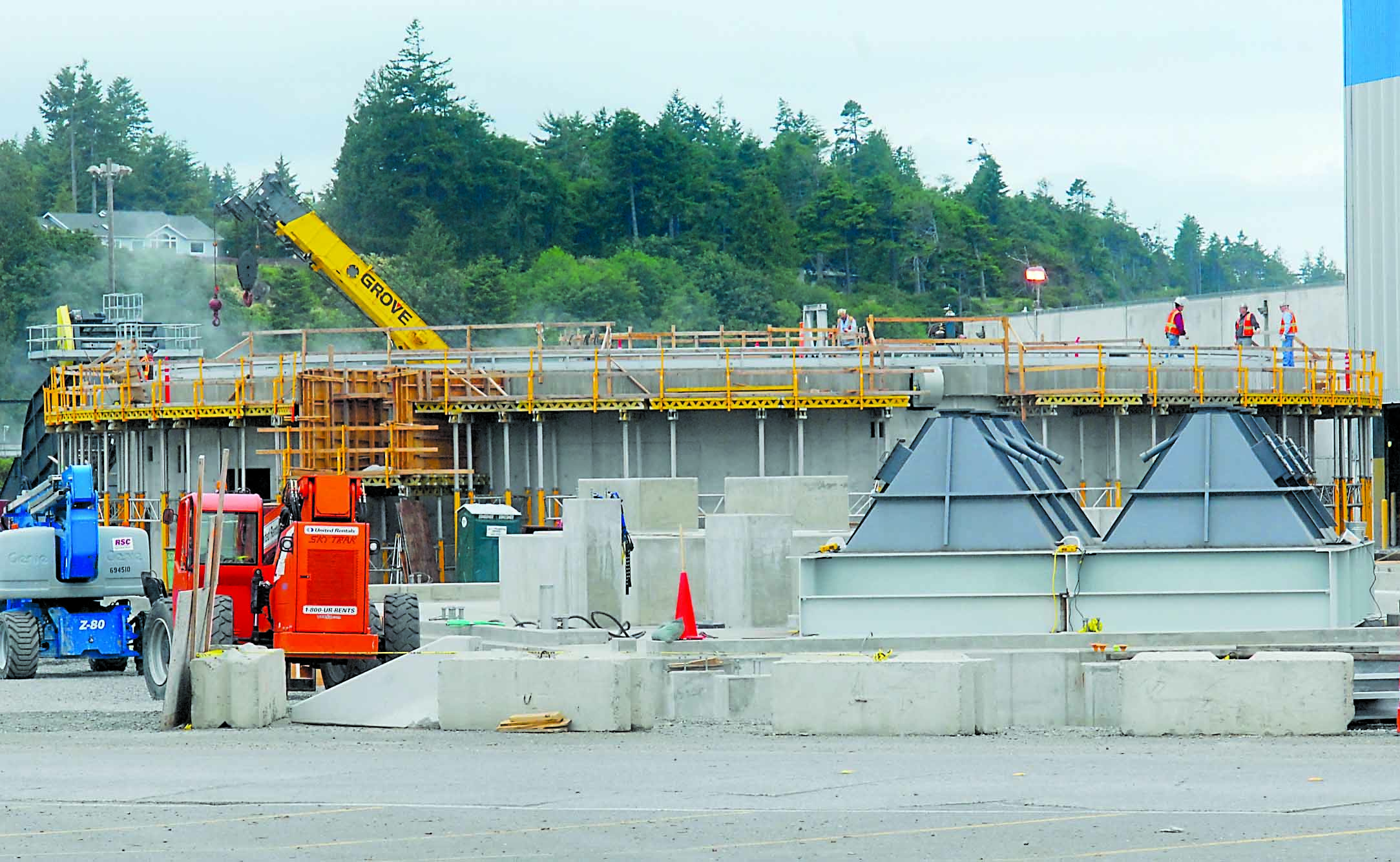PORT ANGELES — The City Council today will consider asking the Olympic Region Clean Air Agency to place a second air-quality station inside the city limit to monitor pollutants from Nippon Paper Industries USA’s upgraded biomass cogeneration plant, a $71 million project slated for completion in April 2013.
The meeting is at 6 p.m. in the council chambers at City Hall, 321 E. Fifth St.
“It was brought up at council, and there was a consensus that we should discuss it, so we are just going to discuss it,” Mayor Cherie Kidd said Monday.
“We are not spending any money. It would just be asking ORCAA if they would pay for and provide an air-quality monitor.”
ORCAA Executive Director Fran McNair said in a telephone interview that ORCAA does not have any spare air-quality-monitoring devices nor the money to purchase any more of them but that an existing monitor at Stevens Middle School possibly could be moved.
Environmental groups have been fighting the 20-megawatt Port Angeles cogeneration project, which burns wood waste to create electricity, and a similar $55 million, 24-megawatt biomass-facility expansion project at Port Townsend Paper.
In recent months, citizens concerned about toxin-laden “ultrafine” particles and “nanoparticles” that are smaller than the 2.5-micron-threshold regulated by the Environmental Protection Agency have requested new air monitoring stations for the Sequim and Port Townsend.
The smallest particulates that emanate from burning wood can lodge in people’s lungs and cause disease, Dr. Tom Locke, health officer for Clallam and Jefferson counties, said in an earlier interview.
“We are in a situation where everyone recognizes that these small ultrafine particles are seriously damaging to health, and they are not regulated,” Bob Lynette, who represents Protect the Peninsula’s Future and the North Olympic Group of the Sierra Club, said last week.
“Everyone, from families raising children, to the chronically ill, to the real estate community need to know whether citizens are being exposed to unhealthy emissions.”
But Nippon’s biomass boiler, which has a fuel storage building at its base that is 100 feet in diameter, “is probably the most regulated boiler in recent history that will be starting up, with the amount of pollution controls that are on it,” mill manager Harold Norlund said Monday.
“All of the issues on air quality have been addressed in the [Olympic Region Clean Air Agency] permit, and that’s where we believe it should be.”
Biomass supporters also say that the smaller particulates are generated in greater quantity by wood-burning stoves and diesel fuel exhaust than by biomass plants.
ORCAA already has approved the idea of installing an air-quality monitoring station at Grant Street Elementary School in Port Townsend and is now considering how to fund it.
The Sequim City Council voted June 11 to ask ORCAA to put an air-quality monitoring station in Sequim.
to measure pollutants from Nippon’s expansion project, located about 20 miles from Sequim City Hall.
The resolution the Port Angeles City Council may approve tonight is modeled after Sequim’s approved resolution.
“The city has received comments at several recent City Council meetings about potential air pollution issues related to a new biomass cogeneration facility being constructed at the Nippon mill in Port Angeles,” the Port Angeles City Council’s resolution says.
“There is a substantial concern among residents that particulate matter smaller than 2.5 microns diameter may increase susceptibility to pulmonary disease.”
But McNair said that while the smaller-than-2.5-micron particulates are not regulated, they are still removed by pollution control devices.
Nippon’s expanded biomass cogeneration plant “will clean the air a whole lot more than the old one did,” McNair said.
“Particulate matter will be cut by 50 to 70 percent over what is coming out now.”
There is already a monitor on the roof of Stevens Middle School and a larger, more sophisticated monitor “in a trailer filled with equipment” at Neah Bay “that looks at what is coming in from the Pacific, China and Asia,” McNair said.
The smaller monitor, called a nephelometer, measures particulates with light scatter and costs $17,000-$20,000 apiece, she said.
“We don’t have any more monitors, and we don’t have any more money,” McNair said.
“The choice will be the city’s. They can pay for it if they wanted to.”
Another option might be to move the monitor at Stevens Middle School to a different location in Port Angeles, McNair said.
“When we place a monitor, we place it for the community, not just for an industry,” she added.
Clallam, Jefferson, Mason, Thurston, Pacific and Grays Harbor counties are covered by ORCAA.
Every county under ORCAA’s umbrella has one monitor except Clallam, which has the two.
________
Senior Staff Writer Paul Gottlieb can be reached at 360-452-2345, ext. 5060, or at paul.gottlieb@peninsuladailynews.com.

